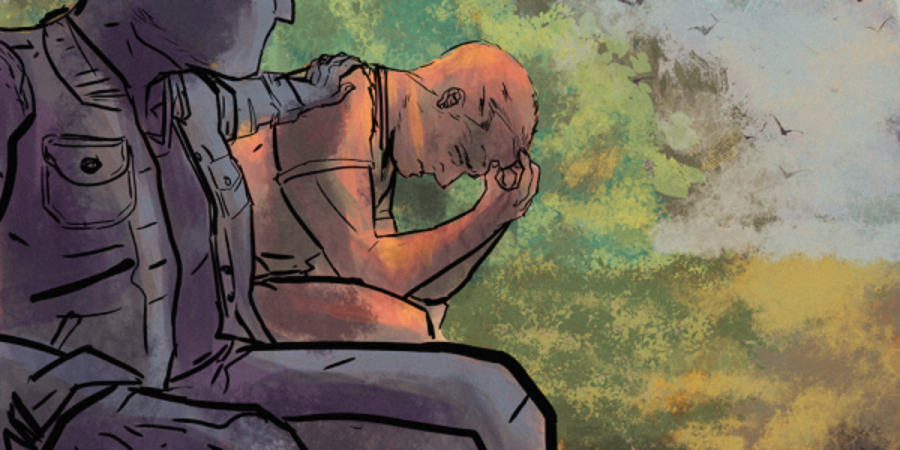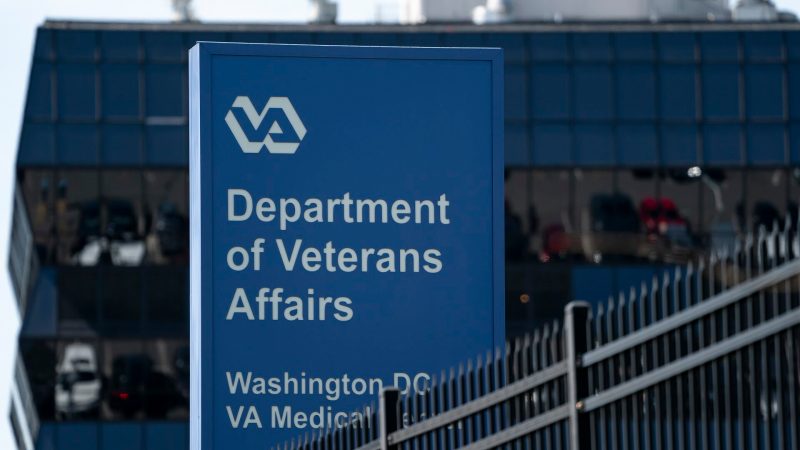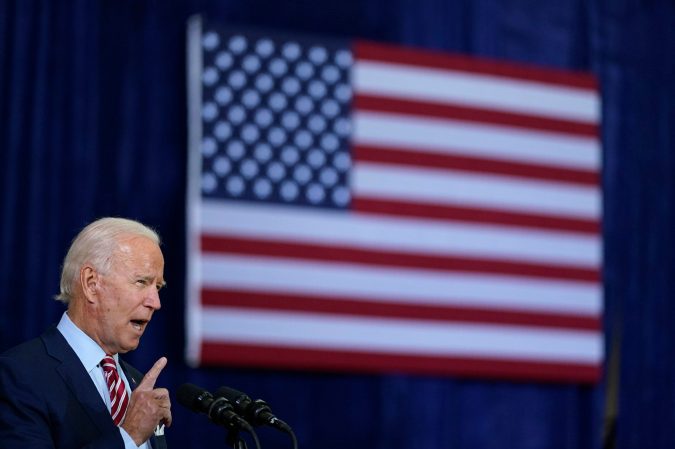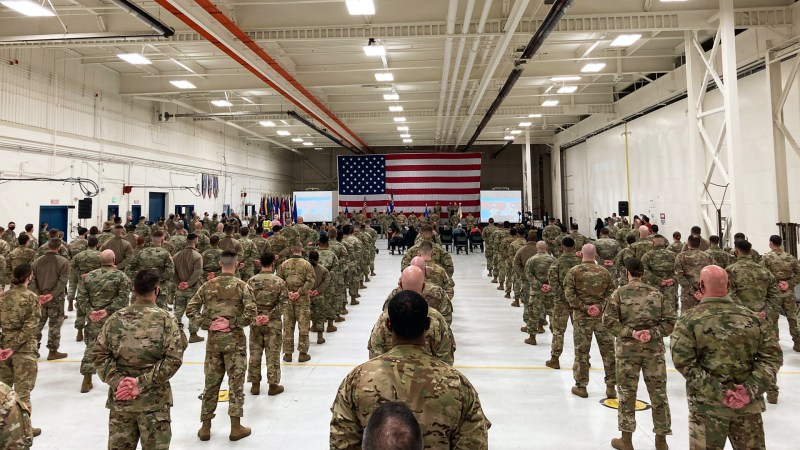In May 2011, amid President Barack Obama’s troop surge, the U.S. Army’s 101st Airborne Division began leaving Afghanistan after a grueling year-long tour. By the end of the summer, the entire division had returned home to Fort Campbell on the Tennessee-Kentucky border, greeted by a succession of parades and award ceremonies honoring the 101st’s sacrifice in some of Afghanistan’s most volatile regions, where a total of 131 Screaming Eagles lost their lives and many more were wounded. Chests were adorned with medals; families were reunited; alcohol flowed. It was a homecoming fit for a group of soldiers who had survived the storied division’s single bloodiest deployment since the Vietnam War.
I served as a combat medic with one of 101st Airborne’s so-called brigade combat teams, or BCTs, on that deployment. In Afghanistan, each of the four battalions within the BCT had been assigned its own area of operations in the country’s south. All shouldered their fair share of the fight to wrest the region from Taliban control. All endured the typical features of modern counterinsurgency: ambushes, IEDs, snipers, suicide attacks, extreme boredom. All suffered heavy casualties. I saw a lot of the guys in my unit struggle intensely with the psychological ramifications of that deployment. But as far as I can recall, of the roughly 800 soldiers who served in Afghanistan with my battalion, not a single one committed suicide when we got back to Fort Campbell.
That was not the case in one of our three sister battalions, which experienced its first suicide soon after we got home. Several more quickly followed. News of each death would trickle down to us through our chain of command, often followed by classes on post-traumatic stress disorder and mental health treatment, and how to properly respond if you suspected one of the soldiers in your platoon was thinking about killing himself. Sometimes we’d overhear the gruesome details being discussed in the brigade chow hall. The unit had what we called a “suicide problem” — and despite the fact that their deployment had been almost identical to ours, everyone blamed the war. Why else would they be killing themselves?
I didn’t give the matter much thought until I started coming across stories of other military units that experienced a spate of suicides after returning from Iraq or Afghanistan. One of my Task & Purpose colleagues served as a Marine infantry captain in the Second Battle of Fallujah. His unit lost a lot of men during the operation, and has lost nearly as many to suicide in the years since. There’s also the well-documented case of the 2nd Battalion, 7th Marine Regiment, or 2/7, which writer Dave Philipps chronicled in a series of articles for The New York Times. The Marines of 2/7 — there were about 1,200 total — returned from a bloody tour in Afghanistan’s Helmand Province in 2008. By the time Philipp’s last article was published in December 2015, 14 had died by suicide. A member of that unit recently told me that the number is now much higher.
Psychologists have long understood that suicidal behavior is infectious — that the urge to kill oneself can pass from one person to another — and a recent study published in the journal JAMA Psychiatry was the first to conclude that military units are not immune to this phenomenon (known as “suicide contagion”). “The odds of suicide attempt among soldiers in a unit with 5 or more past-year attempts was more than twice that of soldiers in a unit with no previous attempts,” the study’s authors wrote, adding that contagion can occur with varying degrees of impact in any type of military unit, regardless of its size. In other words, a soldier’s suicide might trigger a sort of domino effect, which could potentially ripple well beyond his circle of friends and colleagues. And this dynamic is not exclusive to units that serve on the front lines.

As Craig Bryan, a psychology professor and executive director of the National Center for Veterans Studies at the University of Utah, noted in a recent interview with CNN, the JAMA study could help the military develop better ways to respond after a suicide or suicide attempt occurs. But research into suicide contagion also offers profound insight into the veteran suicide problem as a whole, often summed up with the widely reported statistic that an average of 20 military veterans kill themselves every day. Specifically, it helps us answer a question that will be critical if we are to reverse the trend: Why is it that, despite an unprecedented level of national concern for veterans’ health and well-being, as well as a recent surge in treatment options for veterans suffering from mental illness, Americans who served in the military are more likely to kill themselves in the 21st century than ever before?
Veterans today are proud to be counted among the few who have served our country in uniform. Service members made up less than 0.5% of the population in 2013, compared with more than 12% during World War II, according to The New York Times. One well-documented byproduct of the shrinking veteran population, as the Times points out, is a growing gap between the military caste and the larger society. There’s even a popular term for it: the civilian-military divide. On one side of this divide, you have the vast majority of Americans, most of whom have only Hollywood and the media to tell them what life in the military is like. On the other, you have a relatively tiny group of people who have been fetishized for decades as either brooding superheroes or the sacrificial lambs of a misguided foreign policy. The War on Terror has done nothing but fuel those stereotypes, and they’re deadly potent. And while it’s tempting to assign blame for the so-called suicide epidemic, the problem is being exacerbated on both sides of the divide. Recognizing that is the first step toward a solution.
The number of suicides among both former and active-duty service members has been growing steadily since the start of the War on Terror, especially in the Army. By 2011, the suicide rate among active-duty soldiers was more than double what it was in 2001. In fact, for decades prior to the start of the wars, those who served in the military were less likely to kill themselves. And during previous military conflicts, suicide rates among troops have been historically low. During the last three years of World War II, the Army’s suicide rate was less than half the rate in 2011. Same goes for the Korean War.
Research indicates that, while suicide risk increases for those with significant battlefield injuries, the majority of veterans who have committed suicide in recent years spent little or no time in Iraq or Afghanistan, either due to age (most were 50 or older), or to failing to complete their enlistment. And the VA’s most comprehensive report on the matter concluded that there is no clear link between combat exposure and higher rates of suicide. That same report found that, while veterans constituted only 8.5% of the U.S. population in 2014, they accounted for 18% of total suicides.
The risk of suicide increased most dramatically among those who did not use VA services, which suggests that mental health treatment is helping curb the epidemic. However, as a trio of scholars recently noted in an essay published in The Conversation, the medical community still doesn’t fully understand combat-related psychological trauma, and common symptoms have evolved over the years. For instance, the primary symptoms of “shell-shock,” as PTSD was known in the World War I era, were paralysis and amnesia, which are now extremely rare among traumatized troops. Meanwhile, the veteran suicide rate is 10 times higher than the rate reported by the American Legion in 1922.
The essay concludes: “We still don’t know enough about how soldiers’ own experiences and understanding of PTSD are shaped by the broader social and cultural views of trauma, war and gender.”
In other words, broad social factors may play a larger role in shaping service members responses to trauma than the trauma itself.
By 2007, PTSD was already being called a “signature wound” of the War on Terror. That assessment has persisted to this day, and not without good reason. As author Sebastian Junger noted in his 2016 book, Tribe: On Homecoming and Belonging, half of Iraq and Afghanistan veterans have applied for permanent PTSD disability, and a third of them have been diagnosed with the disorder. But there’s a catch: only 10% of service members have seen actual combat in those conflicts. Junger argues compellingly that PTSD is often misdiagnosed among troops, and that the disparity between combat exposure and high rates of PTSD diagnoses partly owes to the sense of extreme alienation many veterans feel when they transition out of the military. “The problem,” he writes, “doesn’t seem to be trauma on the battlefield, so much as reentry into society.”
The society veterans have been returning to since the early days of the War on Terror is one that has grown increasingly obsessed with the state of their psychological health. As with films about the Vietnam War released in the aftermath of that conflict, the theme of mental illness has factored prominently in cinematic portrayals of post-9/11 veterans. But in this case, Hollywood began releasing a wave of Iraq War movies featuring irreparably damaged characters while the wars in Iraq and Afghanistan were still raging on. Kathryn Bigelow’s Oscar-winning The Hurt Locker (2008) is about an Army sergeant driven by a suicidal obsession with dismantling bombs; Stop-Loss (2008) stars Joseph Gordon-Levitt as a young soldier who kills himself after witnessing the deaths of his comrades in Iraq; and In the Valley of Elah (2007) centers on the mysterious disappearance of an Iraq War veteran who, it turns out, was brutally murdered by members of his own squad. The New York Times described the latter film as an “earnest attempt to grasp the moral consequences of the war in Iraq.”
But it’s not just journalists and filmmakers who have hammered the stereotype of the broken vet into the popular imagination. It’s also the droves of nonprofit organizations, advocacy groups, and veteran-oriented businesses that in recent years have erected an entire industry around the notion that people who have served are hardwired for self-destruction. Veterans today have almost limitless options for alternative forms of care for treating the so-called “invisible wounds” they suffered in war. They can learn how to ride horses, or bond with wild wolves, or attend ayahuasca retreats in a Native American church in Florida, where they’ll be administered multiple doses of the powerful hallucinogenic under the guidance of a shaman. All for little or no money, thanks to the approximately $2.5 billion donated annually to the over 40,000 American charities with military-related missions.
Donating to charities, however, isn’t the only way concerned citizens can join the war on veteran suicide. Here, the options are also almost limitless, and include everything from tweeting “#Mission22” (which “helps raise awareness and gives hope to a veteran”), to walking across the United States, to buying coffee. Those who participated in last year’s wildly popular 22 Pushup Challenge may be happy to know that the nonprofit behind the challenge, 22Kill, has since doubled down on its efforts to shed light on the “veteran suicide epidemic that is plaguing our country.” The group is now selling Honor Rings, which are worn on the fingers of “22Kill advocates” to help start conversations about veteran suicide with members of the general public. But that’s not all they do. “When advocates see someone else wearing an Honor Ring, we stop what we’re doing and hold up our hand in our version of the ‘knowing nod,’” reads the 22KILL website. “Recognizing other members of the Tribe is always a great reminder that we’re never alone, and we fight this epidemic together!”
While recent efforts to raise awareness about the veteran suicide epidemic are rooted in good intentions, and have certainly done much to draw widespread attention to the issue, there’s a crucial footnote that organizations like 22Kill never include on their websites: Awareness-raising campaigns generally don’t work. “We’ve known for over 50 years that providing information alone to people does not change their behavior,” Victor Strecher, a professor at the University of Michigan’s School of Public Health, told New York Magazine in 2014 for an article titled Awareness Is Overrated.
However, awareness-raising campaigns can change people’s behavior. Just not necessarily in the ways they are designed to. New York cites, for example, the government’s billion-dollar National Drug Media Campaign, which launched in 1998 with the goal of combatting drug use among America’s youth. A 2004 study concluded that “the campaign had pro-marijuana effects.” Another failed campaign mentioned in the article was designed to discourage the removal of petrified wood from Arizona’s Petrified Forest National Park but had the opposite effect, “because the information ‘normalise[d] undesirable conduct,’ according to a study.”

Could the broken veteran narrative be having a similar effect? It’s certainly possible. While the JAMA study merely looks at the spread of suicidal contagion from one soldier to another, it’s a well-established fact that suicide can spread far more broadly through a culture, and when it does, social messages are usually to blame.
In a 2012 essay titled Is Military Suicide Contagious?, Jacey Eckhart, a military sociologist, urged journalists covering veteran suicide to adhere more closely to guidelines outlined by several U.S. government agencies, including the Centers for Disease Control and Prevention, aimed at limiting the possibility of contagion. The contributing factors, as listed on the CDC website, include engaging in repetitive, ongoing, or excessive reporting of suicide in the news, glorifying suicide or persons who commit suicide, and presenting simplistic explanations for suicide. “Suicide is never the result of a single factor or event, but rather results from complex interactions of many factors and usually involves a history of psychological problems,” states the CDC report. The World Health Organization has also published a similar set of guidelines.
Eckhart pointed to a 2011 study that examined 240 military and newspaper reports of suicide from 15 different outlets and found that veteran suicides were covered more frequently in the news than civilian suicides, and that nearly all of the reports violated at least one guideline. “Civilian articles [about veteran suicide] romanticized the victim and provided more details regarding the suicide,” the study’s authors wrote. According to the CDC, reports of “community expressions of grief (e.g., public eulogies, flying flags half-mast, and erecting permanent public memorials)” can contribute to suicide contagion, because such acts make it seem as if the deceased person is being honored, rather than mourned.
But can the media actually inspire someone to take their own life? The short answer is, yes. As Margot Sanger-Katz of The New York Times noted in 2014, “publicity surrounding a suicide has been repeatedly and definitively linked to a subsequent increase in suicide, especially among young people.” One study Katz cited found that, in the month following Marilyn Monroe’s death, apparently by her own hand, suicides in the U.S. spiked 12% compared to the same month the previous year.
Several months ago, Netflix debuted its wildly popular series 13 Reasons Why, which stars Katherine Langford as a high school suicide victim, who explains her actions through a series of audiotaped messages. The show, which includes a graphic three-minute death scene during the season finale, has renewed concerns among health experts about the power of media to influence suicidal behavior. A research paper published in the JAMA Internal Medicine in July concluded that the show’s premiere resulted in a surge of suicide-related search terms on Google. The search phrase “suicide prevention” rose 23% above normal for that time — driven in part by a public-service message that followed each episode — but searches for the phrase “how to commit suicide” spiked by 26%.
The author of the study is now calling for the show to be taken down, and hundreds of school superintendents across the country, as well as the National Association of School Psychologists, have issued warnings about the possible negative impact the show could have on the mental health of America’s youth. At least two people have publicly claimed that teenage girls in their families committed suicide after watching the show, and it was widely reported that a 23-year-old Peruvian man who jumped to his death in June had been inspired by the series. The man reportedly left written instructions directing a series of tapes to be distributed to a list of people, which is almost exactly what Langford’s character does in the show. Life imitates art. Sometimes, so does death.
A second season of the show is currently in development by Netflix.
If a TV series intended to bring awareness to the issue of teen suicide can wind up inadvertently promoting the idea instead, it’s hardly a stretch to imagine that the extraordinary awareness campaigns aimed at preventing veteran suicide may bear some responsibility for its increase.
By endlessly repeating the message that veterans are at risk, these campaigns have unwittingly created an unconscious narrative with its own seductive effects: In the post-9/11 era, to be a veteran is to be fragile, to be damaged, to be at risk. And for men and women who joined the military in search of a higher purpose, a community and an identity, only to find all three still lacking after they’ve returned to civilian life (or even before), the magnetic pull of this new identity can be hard to resist. As counterintuitive as it is to embrace a perception of oneself as traumatized, it may seem preferable to the sense of isolation and lack of certainty that many of us experience upon our return. And if our comrades — the men and women we served with, the people with whom we forged some of the most powerful bonds of our lives — begin to commit suicide, is it any wonder we might consider joining them?
Tens of thousands of young Americans voluntarily joined the military after the Sept. 11 attacks fully prepared to sacrifice life and limb in the fight against what President George W. Bush called the “axis of evil.” Even after the initial fantasy had given way to reality — after the televised battles in Baghdad, Fallujah, and Ramadi, and the shocking reports of prisoner abuse, and the countless stories of soldiers being ripped apart by IEDs — people continued to enlist in droves. Even after it became clear that there were no weapons of mass destruction in Iraq, and that Osama bin Laden had escaped into Pakistan through the mountains of Tora Bora, the ranks swelled. War sells itself. For many, it’s a chance to do something that feels real. A soldier once turned to me in the middle of a firefight in Afghanistan and said that he could think of no better way to die than while doing something heroic in combat. That’s something else the military offers: the chance to be a hero.
At some point in the last decade or so, we started conflating veterans who take their own lives with America’s casualties of war. You can see it in the way most people these days discuss veteran suicide, employing battlefield references in place of the usual language of death. When a veteran kills himself, we say he “lost his battle with PTSD.” A Google search of that phrase yields 15,700 results. Meanwhile, those who are “fighting” to end the epidemic are often characterized as brothers-in-arms. “United in the war against veteran suicide,” reads the slogan for Mission 22, a nonprofit whose awareness-raising efforts include erecting monuments to the men and women who “lost their battle in the War at Home.” All of this encourages us to imagine that suicidal veterans aren’t merely people in the throes of a mental-health crisis, but rather soldiers engaged in inner combat with the demons that followed them back from war. We don’t need to consult the CDC guidelines to know it is extremely problematic to give veterans who commit suicide a hero’s farewell.
In the all-volunteer era, the military has done an extraordinary job marketing itself as a one-stop shop for self-improvement. You go in and come out a stronger, faster, sharper, more capable version of whoever you were before — at least in theory. Of course, it doesn’t always work out that way. Maybe you got injured, or discharged for being overweight, or you developed a drinking problem after your last deployment overseas. Or maybe you just stayed the exact same person you joined the military to change. But no matter how successful or unsuccessful your experience was, you’ll forever be a veteran. That’s a rare distinction in this day and age.
Among vets, advertising one’s military experience in a civilian setting is called “playing the vet card.” Most use it sparingly, because it’s considered bad form. Some, however, come back from war or leave the military altogether and find that they have few other cards to play. A guy I served with in Iraq gets a fat, 100% disability check from the VA every month and rolls around his hometown in a wheelchair calling himself a wounded combat veteran, though he was never in combat. That’s an extreme and deplorable example. More common — and far more acceptable — are the beards, and the obsession with guns, and the modest 10-30% disability checks for tinnitus or PTSD, and the occasional late night Facebook rants against “snowflakes” and Colin Kaepernick. There are also the shirts that say silly things like, “I Had a Blast at Baghdad Summer Camp.” And the veteran-owned coffee, liquor, and firearms companies. And the YouTube comedy channels that specialize in veteran humor. And the daily feel-good stories of veterans climbing mountains in Africa or walking from New York to Los Angeles to raise awareness about veteran suicide. And the veteran-run military news and culture sites with names like We Are The Mighty, The War Horse, Rally Point, Havok Journal, and Task & Purpose. This is all new.
“Veteran” is now an identity, replete with its own lingo, aesthetic, folk heroes, and lore. PTSD is viewed as just something veterans have, a souvenir of their service, and suicide is what they do when they can’t take it anymore. It’s normal. It’s almost expected. Some might even say it’s heroic.
All of this leaves me wondering more why nobody who served in my battalion during the Afghan troop surge committed suicide when we got home. Perhaps, after a decade of conflict, the chain of command had figured out what the JAMA study would years later formally reveal — that the military is especially vulnerable to suicide contagion. So they took preventive action when the suicides in our sister unit started, and it worked. That’s the best answer I can come up with. Because there are also productive ways to respond to suicide. When Kurt Cobain killed himself at his home in Seattle in 1994, leaving his millions of fans groping to understand why a person so young, talented, and successful would choose death over life, Seattle city officials expected a wave of suicides to follow. However, the local media refrained from romanticizing Cobain’s suicide, and incorporated messages about treatment for mental health and suicide prevention into the coverage. Press was barred from the funeral. And Cobain’s family was also given a platform to publicly express their grief. Remarkably, as calls to suicide prevention lines in the Seattle area spiked, suicides went down.
But it’s still not too late for us. People kill themselves for myriad reasons — financial hardship, legal troubles, failed relationships, mental illness, and addiction among them. Many veterans, myself included, could check off one or more of the boxes on that list. As the years go by, we’ll keep checking off more. Writing this essay, I thought a lot about what would happen if one of the guys from my old platoon killed himself. I’d probably find out on Facebook, trying to figure out what exactly happened as the epitaphs piled up. Maybe there’d be a call from a number not stored in my phone anymore. The voice on the other line would address me as “brother.” They’ll ask how I’m holding up. We’d reminisce about Afghanistan and I’d be reminded of how incredibly close we once were. Our bond restored, we’d make plans to visit. More phone calls and text messages would come. The old platoon would be united, except this time there wouldn’t be any Army psychologists or classes on suicide prevention. Just us, scattered around the country, strangers but still calling each other “brothers.” Strangers but still willing to follow each other into death.
Or, conversely, we’d keep our cool. We’d realize that the issues that drove him to suicide were his and his alone. We’d turn back to our own challenges and face them as individuals rather than members of a unit that no longer exists, and when we saw the stories and Facebook posts about how he “lost his battle with PTSD,” we’d respond the same way we responded when we lost soldiers on the actual battlefield: by quickly double-checking ourselves for shrapnel wounds, and thanking God we were alive.
If you’re thinking about suicide, are worried about a friend or loved one, or would like emotional support, the Lifeline network is available 24/7 across the United States. Call the National Suicide Prevention Lifeline at 800-273-TALK (800-273-8255) to reach a trained counselor. Use that same number and press “1” to reach the Veterans Crisis Line.

























